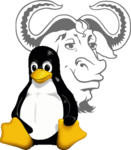Review: Chakra GNU/Linux 2017.10


Chakra is an unusual distribution for a few reasons. It is a rare semi-rolling project, which tries to maintain a fairly stable base system while providing up to date applications. This is an interesting compromise between full rolling and static operating systems. The semi-rolling concept is an idea I like and I was curious to see how well the approach would work dealing with around six months of updates. I was pleased to find Chakra handled the massive upgrade well.
Chakra was once also considered unusual for being very KDE-focused. There are more KDE distribution these days (KaOS, Kubuntu and KDE neon come readily to mind) and I think Chakra may have lost some of its appeal as more competition has established itself in the KDE-centric arena.
I found the distribution to be easy to set up and pretty straight forward to use, but there were a few characteristics which bothered me during my trial with Chakra. One was that while updates installed cleanly, once Plasma 5.12 was installed, I experienced slow login times and reduced performance on the desktop. It could be argued that this is a Plasma problem, not a Chakra problem, but the distribution's rolling release nature means any regressions in new versions of software end up in the user's lap.
Something that tends to bother me about distributions which focus on one desktop toolkit or another is that this approach to selecting software means we are sometimes using less capable tools in the name of toolkit purity. This is not a trade-off I like as I'd rather be using more polished applications over ones which a particular affiliation.
Finally, Chakra includes a number of command line aliases which got in my way. This seems to be a problem I have been running into more often recently. Developers are trying to be helpful by aliasing common commands, but it means that for some tasks I need to change my habits or undefine the provided aliases and the feature ends up being a nuisance instead of a convenience.
Chakra seems to be a capable and useful distribution and I am sure there are people who will appreciate the rolling release nature. Many people will likely also like having lots of KDE applications, and I can see the appeal of this combination. However, one thing which makes me hesitate to recommend Chakra is that the distribution does not appear to bring any special features to the ecosystem. It's a useful operating system and, to be completely fair, users can install non-KDE alternatives if they want to use LibreOffice instead of Calligra or GIMP instead of KolourPaint. But I'm not sure Chakra brings anything unique which makes it stand apart from openSUSE's Tumbleweed or KaOS's polished Plasma offering. Chakra used to be special in its semi-rolling, KDE-focused niche, but these days the distribution has a more competition and I'm not sure the project has any special sauce to set it apart from the crowd.
-

- Login or register to post comments
 Printer-friendly version
Printer-friendly version- 2295 reads
 PDF version
PDF version
More in Tux Machines
- Highlights
- Front Page
- Latest Headlines
- Archive
- Recent comments
- All-Time Popular Stories
- Hot Topics
- New Members
digiKam 7.7.0 is released
After three months of active maintenance and another bug triage, the digiKam team is proud to present version 7.7.0 of its open source digital photo manager. See below the list of most important features coming with this release.
|
Dilution and Misuse of the "Linux" Brand
|
Samsung, Red Hat to Work on Linux Drivers for Future Tech
The metaverse is expected to uproot system design as we know it, and Samsung is one of many hardware vendors re-imagining data center infrastructure in preparation for a parallel 3D world.
Samsung is working on new memory technologies that provide faster bandwidth inside hardware for data to travel between CPUs, storage and other computing resources. The company also announced it was partnering with Red Hat to ensure these technologies have Linux compatibility.
|
today's howtos
|









.svg_.png)
 Content (where original) is available under CC-BY-SA, copyrighted by original author/s.
Content (where original) is available under CC-BY-SA, copyrighted by original author/s.

Recent comments
1 year 11 weeks ago
1 year 11 weeks ago
1 year 11 weeks ago
1 year 11 weeks ago
1 year 11 weeks ago
1 year 11 weeks ago
1 year 11 weeks ago
1 year 11 weeks ago
1 year 11 weeks ago
1 year 11 weeks ago